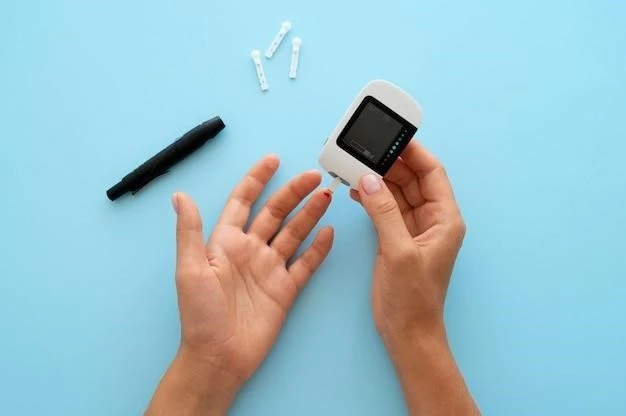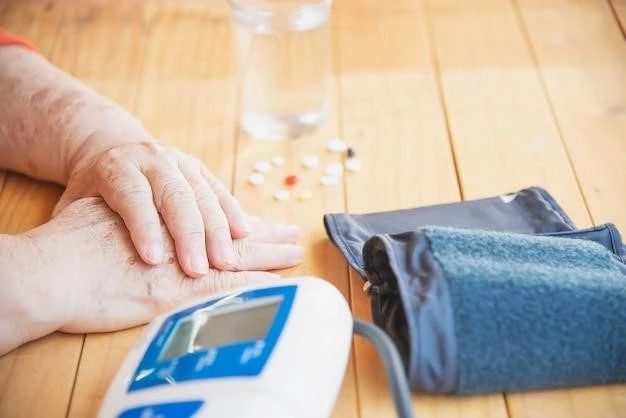Disease Overview ‒ Diabetes Insipidus, Nephrogenic Type 2
Diabetes insipidus, nephrogenic type 2, impacts health by causing polyuria, polydipsia, dehydration, and electrolyte imbalance in patients.
Introduction to Diabetes Insipidus
Diabetes insipidus, nephrogenic type 2, is a rare disorder affecting the kidneys’ ability to conserve water. It differs from the more common diabetes mellitus. This condition leads to excessive urine production and frequent thirst due to the inability to concentrate urine adequately, causing dehydration and potential electrolyte imbalances. Diabetes insipidus can be challenging to diagnose and manage, requiring a thorough understanding of its causes and symptoms.
Understanding Nephrogenic Diabetes Insipidus Type 2

Nephrogenic type 2 diabetes insipidus is a condition where the kidneys are unable to respond to antidiuretic hormone (ADH), leading to the inability to concentrate urine. This can be caused by genetic factors, certain medications, or kidney disorders. Unlike central diabetes insipidus, which results from ADH deficiency, nephrogenic diabetes insipidus involves a lack of kidney response to ADH. Individuals with this disorder experience excessive urination (polyuria), extreme thirst (polydipsia), dehydration, and potential electrolyte imbalances. Managing nephrogenic diabetes insipidus requires addressing underlying causes, monitoring kidney function, and ensuring proper hydration.
Causes and Risk Factors
Nephrogenic diabetes insipidus type 2 can be caused by genetic mutations affecting the vasopressin receptor in the kidneys, obstructing the response to antidiuretic hormone. Certain medications like lithium, demeclocycline, and foscarnet can also contribute to this condition. Other risk factors include kidney disorders such as polycystic kidney disease, electrolyte imbalances, and high calcium levels. Understanding these causes and risk factors is crucial in diagnosing and managing nephrogenic diabetes insipidus effectively.
Symptoms and Diagnosis
The hallmark symptoms of nephrogenic diabetes insipidus type 2 include excessive urination (polyuria)٫ persistent thirst (polydipsia)٫ dehydration٫ and electrolyte imbalances. Patients may experience fatigue٫ irritability٫ and confusion due to dehydration. Diagnosing this condition involves a series of tests such as fluid deprivation٫ urine concentration tests٫ and genetic testing to identify underlying causes like vasopressin receptor mutations or medication-induced kidney dysfunction. Prompt diagnosis is crucial for initiating appropriate treatment and preventing complications associated with nephrogenic diabetes insipidus.
The Impact on Kidneys and Urine
Nephrogenic diabetes insipidus type 2 significantly affects the kidneys and urine production. The inability of the kidneys to respond to antidiuretic hormone results in the excretion of large volumes of diluted urine٫ causing dehydration and electrolyte imbalances. This condition puts a strain on the kidneys as they work harder to regulate fluid balance. The excessive production of urine not only leads to fluid loss but also disrupts the body’s electrolyte levels٫ potentially leading to further health complications. Understanding the impact of nephrogenic diabetes insipidus on kidney function and urine output is crucial for proper management and treatment;
Polyuria and Polydipsia
Polyuria, the excessive production of urine, and polydipsia, the intense thirst that accompanies it, are key symptoms of nephrogenic diabetes insipidus type 2. The inability of the kidneys to concentrate urine leads to increased urine output, requiring frequent trips to the bathroom. As a compensatory response to fluid loss, individuals experience extreme thirst, often consuming large amounts of water. This cycle of polyuria and polydipsia can disrupt daily activities and sleep patterns, impacting quality of life. Managing these symptoms effectively is essential for maintaining hydration and preventing complications associated with fluid imbalances.
Dehydration and Electrolyte Imbalance
Nephrogenic diabetes insipidus type 2 can lead to dehydration and electrolyte imbalances due to the excessive loss of fluid through urine. Dehydration occurs when the body loses more water than it takes in٫ leading to symptoms like dry mouth٫ fatigue٫ and dizziness. Electrolyte imbalances٫ such as low sodium levels (hyponatremia) or high potassium levels (hyperkalemia)٫ can result from the disrupted fluid balance. These imbalances can affect nerve and muscle function٫ potentially causing complications if left untreated. Monitoring hydration levels and electrolyte balance is crucial in managing nephrogenic diabetes insipidus and preventing dehydration-related issues.
Treatment and Management
The treatment and management of nephrogenic diabetes insipidus type 2 focus on addressing the underlying causes and alleviating symptoms to improve quality of life. Medications like thiazide diuretics٫ nonsteroidal anti-inflammatory drugs (NSAIDs)٫ and amiloride can help reduce urine output and enhance the kidneys’ response to antidiuretic hormone. Additionally٫ lifestyle modifications such as regulating fluid intake and maintaining a balanced diet can support hydration and electrolyte balance. Monitoring kidney function and electrolyte levels regularly are essential parts of managing nephrogenic diabetes insipidus. Collaborating with healthcare providers to develop a comprehensive treatment plan tailored to the individual’s needs is crucial for long-term management of this condition.
Medications and Therapies
Medications and therapies play a crucial role in managing nephrogenic diabetes insipidus type 2. Thiazide diuretics like hydrochlorothiazide can help reduce urine output by increasing water reabsorption in the kidneys. Nonsteroidal anti-inflammatory drugs (NSAIDs) such as indomethacin may also improve kidney function and decrease urine volume. Amiloride, a potassium-sparing diuretic, can aid in reducing potassium excretion while maintaining fluid balance. In addition to medications, therapies like lifestyle modifications focusing on maintaining adequate hydration and electrolyte balance are key in managing this condition effectively. It’s essential to work closely with healthcare providers to determine the most suitable medications and therapies for each individual’s specific needs.
Lifestyle Changes and Diet Modifications
Lifestyle changes and diet modifications are essential components of managing nephrogenic diabetes insipidus type 2. Individuals with this condition should regulate their fluid intake to prevent dehydration while ensuring adequate hydration. Monitoring urine output and adjusting fluid intake accordingly can help maintain fluid balance. Consuming a balanced diet rich in electrolytes like sodium and potassium is crucial to prevent electrolyte imbalances. Limiting foods that can exacerbate fluid loss, such as caffeine and alcohol, can also support hydration. Collaborating with a healthcare team to develop a personalized plan that includes lifestyle modifications and dietary adjustments is key to effectively managing nephrogenic diabetes insipidus.
Conclusion
In conclusion, nephrogenic diabetes insipidus type 2 presents challenges related to kidney function, urine concentration, hydration, and electrolyte balance. Understanding the causes, symptoms, and management strategies is vital in providing comprehensive care for individuals with this condition. Effective treatment involves a combination of medications, such as thiazide diuretics and NSAIDs, along with lifestyle changes like regulating fluid intake and maintaining a balanced diet. Monitoring kidney function and electrolyte levels is crucial in preventing dehydration and related complications. By implementing a holistic approach that addresses both medical and lifestyle factors, individuals with nephrogenic diabetes insipidus can better manage their health and improve their quality of life.
